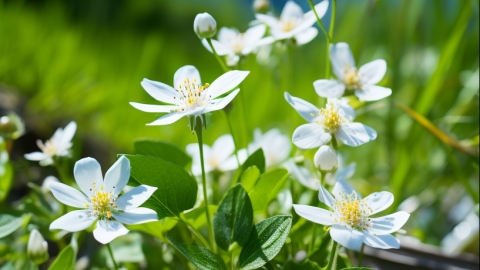What are the differences between Artemisia and Pulsatilla?
The differences between Artemisia argyi (Ai Cao) and Pulsatilla chinensis (Bai Tou Weng Cao) generally include their sources, medicinal properties, functional emphasis, appearance characteristics, and applicable populations. A detailed analysis is as follows:

1. Different sources: Artemisia argyi comes from plants of the Compositae (Asteraceae) family and is a commonly used traditional Chinese herb as well as a folk material. Pulsatilla chinensis, on the other hand, originates from plants of the Ranunculaceae family and is primarily used as a medicinal herb. These two herbs are entirely different in botanical classification.
2. Medicinal properties: Artemisia argyi is warm in nature and functions to warm the meridians and dispel cold, making it suitable for treating cold-related diseases or individuals with cold deficiency syndromes. In contrast, Pulsatilla chinensis is cool and cold in nature and excels at clearing heat and detoxifying, primarily used for regulating conditions involving damp-heat.
3. Functional emphasis: Artemisia argyi mainly functions to warm and nourish the body and is commonly used to relieve abdominal pain and menstrual irregularities caused by cold-dampness. Pulsatilla chinensis, however, specializes in clearing heat and detoxifying and can be used to treat dysentery caused by damp-heat and skin infections.
4. Appearance characteristics: The leaves of Artemisia argyi are gray-green and emit a strong aroma, whereas the leaves of Pulsatilla chinensis are smaller, with white flowers, giving it a more distinctive appearance. There are obvious differences in their physical appearance.
5. Applicable populations: Artemisia argyi is suitable for individuals with cold constitutions or those requiring warming and nourishment, while Pulsatilla chinensis is more appropriate for individuals with damp-heat constitution or those suffering from discomfort caused by heat toxicity. Pulsatilla chinensis should be used cautiously in individuals with cold deficiency of the spleen and stomach.
Artemisia argyi is commonly used externally through application, fumigation, or boiling in water for drinking to dispel cold and warm the uterus, whereas Pulsatilla chinensis is primarily administered internally, usually decocted to clear internal heat toxicity or regulate gastrointestinal issues.




